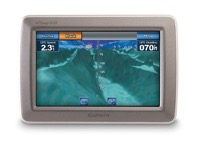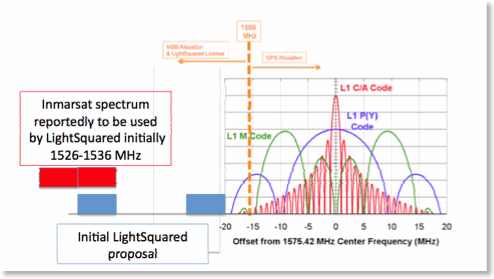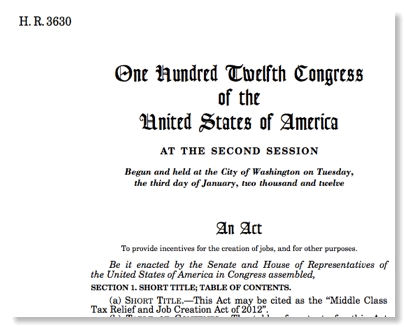Spectrum Provisions in P.L. 112-96
On February 22 President Obama signed the Middle Class Tax Relief and Job Creation Act of 2012 (P.L. 112-96) into law. Despite its name, this 101 page bill is one of the more significant pieces of legislation in the spectrum area in several years.
While trying to solve the budget crisis and the economy, Congress could time to give gifts to its favorite industries. One provision that has attracted little attention is Section 6409 which Don Evans at CommLawBog describes as
a small measure of relief in the on-going struggle to get tower modifications approved and constructed. Buried in a collection of odds and ends dumped, seemingly as afterthoughts, at the end of the law, Section 6409 requires state and local governments to approve modifications of wireless towers and base stations as long as those modifications don’t substantially change the dimensions of the existing structures.
As Don points out, this section has little legislative history and deals with preemption issues that raise serious constitutional issues. Nevertheless, local zoning and permitting issues have slowed tower construction and put excess pressure on spectrum as the only solution. Of course, the cellular industry could have tried to hire engineers and architects to develop new tower designs more acceptable to neighbors, but in this case chose back room deals on Capitol Hill. I hope it works out well for them.
GAO is given some new temporary roles in the new legislation. In Section 6408 GAO is told “ to consider efforts to ensure that each transmission system is designed and operated so that reasonable use of adjacent spectrum does not excessively impair the functioning of such system.” This task is explicitly supposed to consider receiver standards, use of adjacent spectrum, and use of guardbands. Perhaps GAO will be able to address the issue of receiver standards that FCC and NTIA have been unable to deal with. In Section 6412 GAO is also told to study the rejection of FCC licenses in the 11, 18, and 23 GHz bands.
Sect 6201-6303 deal with first responder networks and hopefully will break the impasse in this area which has endangered public safety for decades.
Sect. 6403 has the TV incentive auction favored by CTIA and condemned by NAB, presumably with compromises to try to pacify both. The mysterious “unlicensed auction” has disappeared.
Sec. 6406 requires an NTIA study to determine if the U-NII band can be expanded to cover 5350–5470 MHz and 5850–5925 MHz .
Sect. 6601 and 6002 end the odd saga of the Telecommunications Development Fund which was created in the Telecommunications Act of 1996, 47 USC 614, to fund private sector telecom R&D projects with revenue that was a byproduct of FCC auctions. While perhaps a good idea, TDF was implemented badly with declining transparency. For example, search the FCC website for information on it and see how information has decreased over the years to almost no new information. TDF itself seems to be in a serious state of denial about where its funding came from - federal resources. The presence of an FCC-appointed board member at TDF has created serious appearances of conflict of interest and it is just as well that Congress is ending federal funding and granting in dependence to this group. Spectrum Bridge is a recipient of TDF funding and that creates an appearance that it gets unequal treatment from FCC.
Section 6701 expands the role of OMB in federal spectrum management which is a major improvement since the current legislation under which NTIA functions creates a basic conflict about whether NTIA is supposed to focus on the public interest in the needs of the federal spectrum users. There are created within NTIA 2 new entities: the “Technical Panel” and the Dispute Resolution Panel” to deal with federal spectrum relocation issues. Both panels have 3 members: one appointed by FCC, NTIA, and OMB. There is no requirement that they be federal employees, but there is also no pay for these positions. Guess what will happen? In any case, it is a move in the right direction.
IEEE Wireless Communications Article on GPS/LS
The February 2012 issue of IEEE Wireless Communications contains the above article on the GPS/LightSquared controversy. This article went to press January 22, 2012. (This link will work for a limited amount of time, after which access will be limited to IEEE COMSOC members or those who have or purchase access through IEEE Xplore.)
Clearly some “water has gone over the dam” since there January 22 deadline for this article, but readers will find much of this discussion relevant today.
GPS, LightSquared & Boaters

'If GPS were compromised it would affect every GPS-dependent piece of equipment' - Garmin
GPS-enabled devices could be compromised if a plan to expand the United States’ broadband system goes forward, yet the company that proposes to build a broadband cell-phone communications network it calls LightSquared, 4G-LTE wireless broadband, is as yet completely undaunted by marine industry concern that the vital GPS system is under threat.
I contacted the editor with my concerns about what was said and she graciously invited me to post an alternative viewpoint. It is available here, but to save a mouse click is also reproduced below:
==========================================
On January 31 Sail World reported that 'alarm and anger were growing in the marine industry as LightSquared threatened the USA's GPS system' (See Sail-World story). In a previous story Garmin was quoted as saying 'If GPS were compromised it would affect every GPS-dependent piece of equipment.'
Now keen sailor, eminent Doctor of Engineering and Spectrum policy expert, Michael J. Marcus, has weighed into the discussion with some salient facts:
As a long time sail boat owner (Jeanneau 32 Attalia based near Annapolis) and a radio spectrum policy wonk (Wi-Fi and Bluetooth began from rules I initiated at FCC in the early 1980s), I have been troubled by statement such as these made in Sail-World's article on the subject.
However, these pale compared to statements made by Garmin at the beginning of the article or by BoatUS, the major boating membership association in the US to which I belong.
First, what is the origin of this controversy? Cellphones and broadband are becoming key parts of our societies and economies. Today’s systems are rapidly running out of capacity. While the cellular industry exaggerates additional spectrum as the only possible cure for this capacity problem, it certainly is a key tool. FCC and its counterparts in other countries are all trying to find more radio spectrum for such services.
About 20 years ago it appeared that 'mobile satellite service' or MSS, e.g. Inmarsat and Iridium, would be a key telecom service everywhere the world and that global spectrum had to be reserved for it. Advances in both terrestrial and satellite communications have proved this to be wrong in a key aspect: MSS spectrum is now very lightly used in populated areas and new technology allows the same spectrum to be used for MSS in rural areas and over oceans while used for cellular-like services in populated areas – effective 'recycling' otherwise unused spectrum in areas where it is sorely needed!
One of the MSS bands involved is just below the GPS L1 band used by commercial GPS units. In the US, FCC has authorized use of this band for terrestrial cellular services (FCC jargon for this is Auxiliary Terrestrial Component or ATC) since 2003 and the company now called LightSquared has been authorized since 2004.
Now there is some dispute about details of the early FCC decisions and how many base stations were allowed under them, but it is clear that base stations were allowed next to the GPS band since 2003 and that the civil GPS supplier community paid little attention to the fact that GPS would be having a new neighbor with much stronger signals in some places than the original MSS signals.
Real receivers of all types do not have infinite ability to reject strong adjacent band signals. Such rejection requires careful design and the amount of rejection possible increases with time as filter technology improves. As long as the MSS band had no cellular base stations in it, little rejection was needed and GPS manufacturers did not have to incorporate the latest filter improvements which incurs both design and retooling costs.
Thus it appears that the GPS industry has not pressed the filter manufacturers for the latest technology as the cellular systems in nearby bands have. As a result many GPS receivers have a lingering vulnerability to strong adjacent band signals that results from GPS manufacturers ignoring policy changes made in the US almost a decade ago!

| Spectrum chart - .. . |
Rather than admit any responsibility for this and focus on a reasonable transition scheme, the GPS industry has chosen to make what a friend who is a GPS pioneer has described as a Jonestown-style 'suicide pact'. (The Garmin quote at the start of this article is an indication of this approach.) The industry has enlisted lawyers and PR firms and a broad variety of 'fellow travellers', such as BoatUS, to say the 'sky is falling'.
It has even convinced the Air Force general who is responsible for the GPS satellites to testify that the LightSquared system would impact military GPS systems that were supposed to be jam resistant. Without getting too technical, if such a 100 watts transmitter 23 MHz away from the edge of the GPS band could impact military GPS receivers, imagine what a bad guy could do with a similar or stronger jammer transmitter inside the GPS band? And it is well known that simulated GPS signals are even more effective jammers, watt for watt, than noise or cellular-like signals.
Military sources have told me that the general’s testimony on military equipment susceptibility actually dealt with obsolescent equipment from the early days of GPS that is still in inventory in small quantities and vulnerable to any undesired signal.
But real boaters know something that lawyers and PR firms apparently don’t: boats float on water.
The LightSquared/GPS controversy, especially after June 2011 move farther away from the GPS band, is an issue with GPS receivers that both have inadequate adjacent band rejection and are within a few hundred meters of a possible LightSquared base station – not a typical boating scenario but never mentioned in BoatUS material on the subject.
In trying to use the public spectrum resource for the maximum overall public good national regulators like FCC regularly have to repurpose bands as technology and society’s needs change. Such repurposing sometimes impacts both incumbent users of the band, not so in this particular case, or users of neighboring bands.
For example, several times in the last few decades TV spectrum in many countries has been repurposed for mobile communications. The usual solution is a transition scheme that balances the costs and benefits of the change and allows affected incumbents users time to adapt to the new change.
The GPS industry and its fellow travelers appear to have no interest in such a transition that might make them admit to design errors in the past decade. Such a viewpoint could result in spectrum gridlock that prevents future repurposing of all bands. This issue is further complicated because the issues lies squarely on the fault line between the jurisdiction of FCC and a separate coequal agency, NTIA, that regulates federal government spectrum use.
In a reasonable transition scheme the base stations could be designed to prevent high signals in all navigable waters during a period in which GPS receivers improve – but the GPS manufacturers and BoatUS don’t want to discuss transitions and the overall public interest in spectrum use. They have dug themselves into policy hole and demand only total victory!
How did BoatUS reach this position and continue to maintain it after the LightSquared proposed to move further away from GPS? Multiple inquiries to BoatUS from this member have received no clear response other than vaguely siding with Coast Guards and industry. Did BoatUS use knowledgeable members in reaching and reviewing its decision? Like the boy who cried wolf, expressing unfounded fears to government regulators harms the credibility of the boating community in other regulatory decisions that could be more important to boaters.
Sail World readers outside the US need not be concerned about this issue as it is purely a domestic US issue and individual countries have the discretion to make such decisions within their own territory under the terms of Article 4.4 of the ITU Radio Regulations.
However, all GPS users might want to press GPS manufacturers about whether they are using interference rejection technology comparable to what cell phones in nearby bands use.
GPS units are now sold in multimillion unit quantities so they can afford contemporary technology filters that usually cost under $1 in such production quantities. (Note these are marginal costs for new units, retrofitting existing units is usually much more expensive.)
But decide for yourself what the issues are in this controversy and how we got to where we are. Here is information from the opposing sides:
LightSquared
GPS Industry
...and for masochists & policy wonks:
All FCC filings received:
Early filings (Before 06/28/2011)
Later filings (After 06/28/2011)
About Michael J. Marcus:
Michael Marcus is both a sailor and a technical spectrum policy specialist. He has a doctorate in electrical engineering from MIT, worked almost 25 years at FCC on spectrum policy issues, and was elected a Fellow of the Institute of Electrical and Electronics Engineers for his leadership in spectrum policy. For more information about Dr Marcus, including his complete CV, please go to Marcus Spectrum Solutions LLC
UPDATE
This post went up just prior to the release of NTIA’s “LightSquared Recommendation to the FCC” and the unusual FCC “Spokesperson Statement on NTIA Letter--LightSquared and GPS”. While your blogger is now formulating his analysis of these actions, it is interesting to note that the above mentioned BoatUS is back at it with a press release entitled “We Aren't Out of the Woods Yet on Navigation System Concerns” that urged its members to flood FCC with letters:
"Despite the great news last week that the FCC has acknowledged interference issues with the LightSquared proposal, we're not ready to declare a victory," said BoatUS President Margaret Podlich. "Given this company's tenacity over the last year, we want to make sure that boaters' needs are remembered as the FCC makes their final decision."
Sail-World article on BoatUS new request for comments.






![Validate my RSS feed [Valid RSS]](valid-rss-rogers.png)

